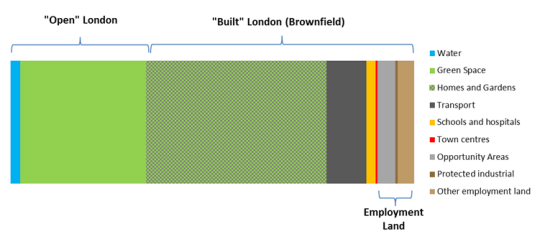For whoever becomes Mayor of London in May, housing will undoubtedly be their most important challenge.
Whilst the candidates are agreed on the scale of the problem, with all committing to build 50,000 new homes a year over the next ten years, the trickier question of where the homes will be built has yet to be answered adequately by any of them.
A new report published today by Shelter, in partnership with property development consultancy Quod, evaluates a number of options available to the next Mayor. The overriding message of the report is simple and somewhat inevitable: there is no “silver-bullet”, single solution for housebuilding.
Although it may be a truism to say ‘there is no simple answer’, the report’s findings are politically significant, as they challenge the dominant narrative that building on brownfield land is an adequate solution. So far in the election campaign, the two main candidates have both relied heavily on brownfield land as a stock response to this issue. Yet the report’s new analysis of the capital’s land demonstrates the clear limitations of this as a solution. The vast majority of brownfield land – two thirds – is already used for housing. Much of the rest is used for vital infrastructure such as hospitals, schools, and transport links, or already earmarked for development.

To double housing delivery and meet the current demand for 50,000 homes a year using brownfield land alone, London would need the equivalent of four Olympic Park developments every year, in addition to all current development. Whilst building on brownfield land will undoubtedly be a feature of the next mayor’s housebuilding strategy, it will need to be just one aspect of a multi-faceted plan.
The report also evaluates a variety of other options which could be used to address London’s housing crisis, including:
- Building higher – High buildings have the potential to increase the number of homes in developments, but good design, and smart planning policy from the next Mayor, is essential.
- Green Belt – Building on some bits of the green belt should be an option, if done right. Smaller, controlled release of appropriate bits of green belt land could deliver substantial numbers of new homes.
- Garden Cities – Garden Cities outside of London could reduce economic and space pressures on the capital, but is likely to be a slow option, and is dependent on the compliance of local authorities.
The report weighs up the benefits and limitations of each option – but concludes that some combination of all of them is probably required. Just as there is no silver bullet, there’s not only one combination of these policy solutions that could solve the shortage. The next Mayor can fix this – if they are prepared to think big and take some tough decisions.
We’ve previously set out our three tests for the Mayoral candidates: the most important message in this report is the need to keep all the options open and resist the urge to rule things out – the fewer options we leave ourselves, the greater the pressure on those that remain.
